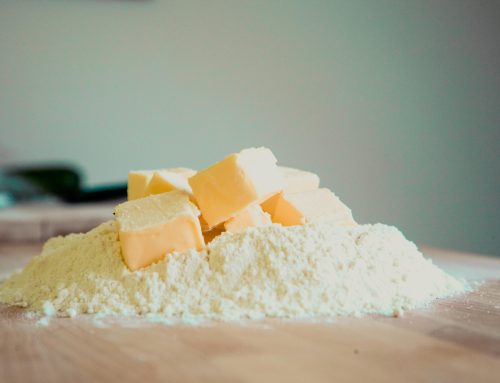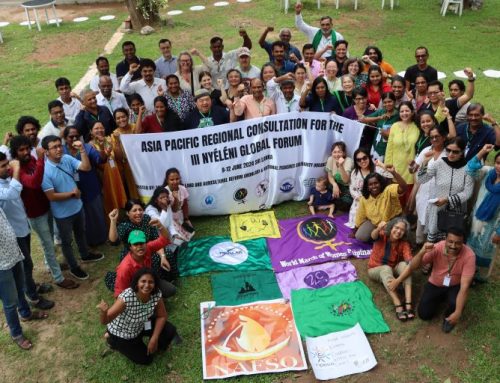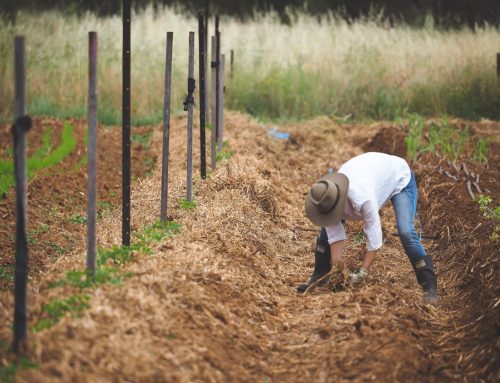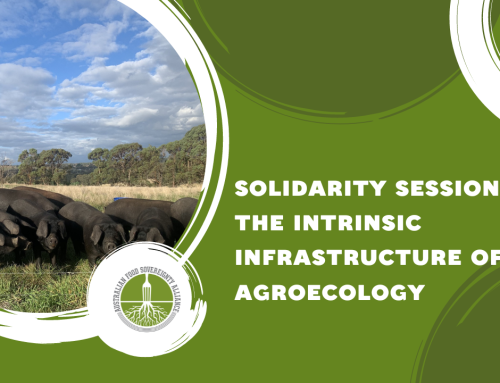 15 APRIL 2014
15 APRIL 2014
We are a network of innovative, small to medium-sized primary producers from across Tasmania, based primarily in the North and South East. Details of signatories to our submission can be found at the end of this document.
We appreciate the opportunity to contribute to the development of Australia’s first comprehensive, national agricultural policy.
Our activities include commercial organic farming, retailing and wholesaling (both to domestic and export markets), agritourism, family and collective farming, urban and community farming, and education and training. These span many of the activities within the scope of this white paper – from land and environmental management, to food production and distribution, providing regional jobs, building rural community resilience, skilling our regional workforce and also developing our next generation of farmers.
Our income is largely through direct sales to the public via farm gate sales, at farmers’ and producers’ markets (an increasingly important outlet for retail food sales in Australia and globally), online, and wholesale distribution both within Tasmania and to mainland Australia (and, to a lesser extent, for overseas export).
We believe that the shortest supply and processing chain possible is the best outcome for both farmer and consumer – and that we are examples of how this can be a viable and productive model for Australian agriculture.
Overview
Our submission seeks to highlight small and medium-sized producers’ significant contributions to addressing food security within Australia; and our contribution to regional economy and development.
We also aim to provide information about barriers to our productivity and growth.
We will describe a variety of farming and food distribution models which strengthen our regional communities’ food security and what we think are the most sustainable and effective ways to address many of the issues raised in the issues paper.
Priorities
- maintaining Tasmania’s biosecurity
- reducing ineffective and/or duplicated government regulations across multiple jurisdictions
- greater representation for smaller producers’ interests within government and regulatory frameworks – such as representation to the proposed industry advisory council designed to enhance consultation
- food labelling – country of origin and Genetically Modified Organism (GMO) ingredients.
Issue 1: Ensuring food security in Australia and globally
Tasmania’s food security strategy “Food for all Tasmanians” notes that as many as one in ten adults living in households with incomes in the bottom 20% experience food insecurity on a regular basis. More than ten per cent of children live in households where food insecurity is experienced on a regular basis.
We consider that food security means having access to affordable, nutritionally dense foods – preferably grown locally and organically. Local food is usually fresher – and therefore more nutritious – than food travelling long distances. Farmers know their local climate and soils, and can grow varieties best suited to local conditions, allowing flavour and nutrition to take precedence over transportability, shelf life and the volatility of global markets.
Flavoursome food, interesting cultivars and heirloom varieties can form the basis for exciting the interests of children in growing food. We can better tap into the value of schools in getting children and their parents involved in food production locally, and in educating them about nutrition, healthy food preparation, reducing waste and how to use the excess in their gardens.
We contribute to food security by understanding, and being able to be immediately responsive to, the food requirements of our community and our customers’ needs. Models of alternative food production and distribution models have proved popular, effective and enduring in their aims to provide greater food security locally. Tasmanian examples include:
- farmers’ markets such as Harvest Launceston – providing business opportunities for emerging growers to become self- sufficient and expand and create jobs
- Community Supported Agriculture (CSA) schemes such as Channel Living in Woodbridge
- Fork and Hoe Collective in Nicholls Rivulet, providing income for two families and education and training to potential future farmers via internships
- Produce to the People – a food distribution scheme in North West Tasmania
- Good Life Permaculture – based in Hobart – empowering local growers through education and networking opportunities
- and several successful locally-developed food box distribution schemes aimed at supporting local growers while meeting the needs of local consumers.
We can also be more responsive to local food supply needs via the encouragement of urban farming systems. The Heart Foundation’s Food-Sensitive Planning and Urban Design framework presents excellent case studies demonstrating how this approach to a different type of agriculture can overcome food security domestically.
Within Tasmania, Urban Farming Tasmania and Good Life Permaculture are two examples of viable enterprises promoting urban and community farming as a way to overcome food security.
The contribution of family farming to food security globally has been recognised by the UN in its declaration of 2014 as the International Year of Family Farming. We agree and experience first-hand that it has a significant role in boosting local economies, that it protects the wellbeing of communities, and that it safeguards agro-biodiversity and the environment .
Issue 2: Farmer decisions for improving farm gate returns
Drivers for farmers adopting innovative business models include the diversity and flexibility provided by the range of activities within polycultural farming and the opportunity to improve the environment and land condition for greater farm-gate returns.
Agritourism and value-adding at farm retail outlets (such as Huon Valley’s The Apple Shed) add to farm-gate returns – as well as diluting farmers’ risks and providing a more interesting experience for farmers and their families. Practices such as biological farming and polycultural farming (as practiced by Provenance Growers) provide families income while improving the land and future returns.
We invest everything in our farming ventures and use innovative farming practices which reduce our costs (and inputs) and improve our resilience as rural and regional communities. We borrow, swap, reuse and recycle infrastructure (such as irrigation and building materials) and plant/equipment.
Mixed cropping and farming activities create resilience for our businesses, especially in relation to extreme weather events. They also mitigate and dilute the risks of adverse, seasonal, and cyclical occurrences.
We look at the value of farming in contexts broader than increasing scale, supply and export markets. Health, local economies, and tourism benefit from encouraging small scale, innovative locally-based food production. As small producers, we are concerned with the following questions: how can we help support food security by creating nutrient-dense fresh food through the adoption of alternative farming practices? How can we create a system of farming that enriches the soil and environment rather than depleting it? How can we be more self-sustaining, so that our reliance on external fertility (and other inputs) is reduced?
Holistic grazing and land management, rotational cropping, biointensive agriculture, regenerative closed loop farming systems, agroecology, and biological farming present challenges which greatly motivate not only traditional farmers, but also many new-comers to the land. Increasing both the quality and quantity of food that can be produced involves long-term planning, which is more possible in communities less subject to global market volatilities. Benefits are addressing climate change, increased soil fertility and condition, reducing soil carbon loss and also increasing yields per acre, productivity and returns.
Our farms play an important role in providing these sorts of varied, interesting experiences to potential farmers and farm employees wanting to test their own interest and suitability for farming prior to entering the industry on a larger scale.
We’re creating a rich culture of farming enterprises attractive to tourists and also to immigrants moving here from the mainland and overseas. Our scales of economy and farming within Tasmania are small and we capitalise on this by promoting our farming and food culture and points of difference – examples are enterprises such as The Agrarian Kitchen, The Apple Shed, Provenance Growers, Bruny Island Cheese and the Gourmet Farmer’s Fat Pig Farm abound in the patchwork quilt that is small-and medium-scale production in Tasmania.
Constraints to our growth are the regulations faced by polycultural farming – we have chickens, pigs, cattle, dairy, eggs, and a range of fruit and vegetable crops, as well as cafes, commercial kitchens, and temporary food licences for markets in several jurisdictions. We understand the need for a regulatory framework, however complex and overlapping regulations are hampering our ability to grow and also to sell everything we grow to a market demanding our produce.
We would appreciate a portal to know and access what resources are available – such as project management, business and financial planning, accounting/tax compliance tools, biosecurity and regulatory compliance, mentoring, concessions and any other incentives.
Issue 4: Increasing the competitiveness of the agriculture sector and its value chains
The retail value of the ‘organic market’ in Australia was estimated to be at least $1 billion in 2010 ‒ with annual growth projections ranging from 10% to 25% for the years ahead, depending on the market segment .
The simplification of labelling of organic foods at retail level is making it easier for consumers to identify and choose certified organic products. Consumers appear to perceive a range of benefits from eating organic foods. The top five consistently identified benefits are ‘chemical free’ (82%), ‘additive free’ (77%), ‘environmentally-friendly’ (70%), ‘no genetically modified organisms’ (65%) and ‘hormone and antibiotic free meat’ (64%).
Organic produce is currently a niche offering in the Australian market, at an estimated 1% of retail turnover. However, expansion is anticipated, in particular with continued growth in distribution by the major supermarket chains. There has also been growth in more direct market routes, such as farm gate sales, farmers’ markets and co-operative marketing schemes. The ongoing presence of independent single store organic retailers underscores the inherent diversity of this market segment.
The Australian market experienced an estimated 50% growth of organic product sales between 2008 and 2010.
Farmers markets, along with other alternative fresh food retail markets, are reported to represent about 7 per cent of the market for fresh food in Australia. By comparison, supermarkets have about 50 per cent of the Australian fresh food market. Growing consumer interest in farming and food production, in particular sustainable, ethical and organic methods of production are a major contributor to the growth of farmers markets.
Farmers markets provide a variety of economic benefits for producers, including potentially higher financial returns; an alternative low-cost retail supply channel; increasing the skills and capacities of producers; and a venue to test new products. Farmers markets may also have flow-on benefits to surrounding communities and boost local tourism .
Most of us have chosen to sell directly to the public, including at markets, in order to retain control of our prices, sales, operations and processes, as well as to maximise returns via retail rather than lower wholesale prices.
Where we have excess, we have been able to sell it via local retailers, and also to mainland organic markets, where this summer, some of us have been obtaining premium prices due to demand being greater than supply for a variety of fruit and vegetable crops.
Retailers of organic produce in Tasmania are experiencing competition from increased numbers of farmgate sales and local farmers’ markets. Many local farmers who were growing and wholesaling are now also retailing directly, resulting in less produce being available to retailers (on sellers) and greater pressure on prices. While this has a flow-on benefits for many growers’ returns, it is also putting pressure on producers to be more efficient, to improve quality and to more accurately reflect their costs into their sales prices.
As demand outstrips supply for local, organically grown produce, it also provides opportunities and gaps in the market, which is being filled by a number of up and coming growers. Many of these have been home-growers who have developed into micro- and small businesses via selling and value-adding their excess produce at local markets and independently-owned and operated retail outlets.
Issue 5: Enhancing agriculture’s contribution to regional communities
We have the greatest interest in contributing to the growth of our rural and regional communities. We are doing this in many ways, including agritourism, which presents rural communities different career options and opportunities in emerging sectors such as regional tourism and hospitality – retaining and skilling our workforce and also potentially the next generation of farmers interested in a more varied base of on-farm activities.
This is certainly occurring in Tasmania’s south, where the Huon Valley has benefitted economically from the development of the Huon wine and cider trails, eco/farmstays, on-farm trail rides and gourmet experiences – with food sourced and prepared locally as one of the main attractions for interstate and international guests.
These activities assist in the attraction of new farmers with a broader diverse skills-base (the Huon Valley is again a prime example, as is nearby Bruny Island and the d’Entrecasteaux Channel, and also the Tamar Valley in Tasmania’s north) and the retention of farming families to the land.
They also provide:
- farmers greater control over sales and prices
- less volatility in relation to price fluctuations
- a more stable income stream/cash flow
- a greater spread of risk over diverse activities and industries
- greater consumer access to locally-grown, fresh nutritionally dense food
- improved networking opportunities across a range of local businesses and industries, helping to strengthen community resilience and self-sufficiency.
They also create demand for local technically-based training facilities and business-development services. We hire local contractors, and look to our local community for employees when we expand – our returns are immediately re-invested directly back into our local economy.
Fork and Hoe Collective in Nicholls Rivulet has developed project-based programs for their interns. These provide support and training so they have the skills and confidence to design, develop and implement their own future farming projects and infrastructure.
What would assist us to contribute to regional jobs and the economy?
- access to apprenticeship schemes to provide support for many of the informal recruitment arrangements already occurring – we could better target people already living in our communities, and improve succession planning before our young people leave the area
- a single portal to government services at all levels – knowing what services, schemes and incentives already exist and are available to us
- access to start-up capital
- funding and research to develop sustainable farming technologies such as holistic grazing, crop rotations, and sequestering and creating soil carbon (as such the methods are the most accessible and affordable to small-scale farmers).
Issue 6: Improving the competitiveness of inputs to the supply chain
The impact of climate change has been providing beneficial opportunities for organic Tasmanian producers this last summer. Hot, dry conditions on mainland Australia caused a shortage of fruits and vegetables for organic markets, particularly for apples, potatoes, carrots and berries. As extreme heat events are expected to become more frequent, demand for Tasmanian exports can be expected to increase.
Although this does provide benefits to growers wanting to and able to meet this demand, we will also need to consider how it affects our ability to meet the ongoing needs of the Tasmanian market to ensure a continued local supply.
As our soils are generally considered to be of a lesser condition, this is an area where private and public interests can converge in the protection of the environment – and even in its rehabilitation and improvement. Our long-term land and soil regeneration strategies and methods contribute to the improvement of our land for future farming generations. We invest a lot of time in improving our soil fertility and condition organically – this usually involves making our own compost, and sharing resources across the community – which means fewer costs in terms of inputs. The time factored into this is reflected in our returns. We are able to set and receive premium prices in areas of the market where consumer demand for organic produce is high and increasing, in line with global trends.
Barriers to our competitiveness include:
- lack of proper freight infrastructure across Bass Strait for those of us in a position to export
- uneven application of standards – for example, cheaper imports not having to comply with our higher environmental, production, quality and labour standards
- lack of a requirement to accurately label products – be it the adulteration of the “made in Australia” brand
- no requirement to apply a labelling standard to GMO products
- inequitable tariffs on our exports (such as the dismantling of our sugar tariffs in exchange for discontinuation of US sugar beet subsidies)
- lack of assistance for farmers needing to respond to changing market conditions, such as those selling parts of their properties and moving from monocultures/broadacre farming to smaller, more diverse farming
- access to mental health and other services during these periods of stressful transitions.
In terms of labelling, we seek a truly level playing field and more support for domestic production. The view that tariffs and barriers to entry are bad assumes perfect information (labelling) and no externalities (where, for instance, trading partners countries allow food producers to push costs from both the legal system and the ecosystem onto society such as environmental clean-ups and dealing with the fallout from GMO contaminations).
In terms of attracting workers to agriculture, this is being done through the broad experience they can gain on small, diversified farms – thus small farms can and, in our experience, do provide a valuable starting point for those interested in a career in farming.
Issue 7: Reducing ineffective regulations
As our on and off-farm activities are many and varied, we are affected by complex and multiple regulations and regulatory frameworks. Our inability to capitalise on the full scale of our operations and to produce an income from the full range of our activities (many of which are vital to our biodiverse farms) is one of the biggest threats to our existence.
The most disproportionate regulations to the risks for us are:
- current restrictions on sale of farm-killed meat
- current restrictions on sale of raw milk
- current regulations surrounding sale of eggs
- regulatory obstacles to new farm businesses and those allowing families to diversify organically.
Restrictions on sale of raw milk
Some of our local producers would look to herdshare arrangements if it was legal to sell raw milk in Tasmania, however are unable to afford the cost of establishing a small scale dairy AND a pasteuriser. There is a growing demand for raw milk in Tasmania and this could be a great new market for several businesses supporting this submission. We are impressed by models in England, New Zealand, and parts of the US, in which regulatory authorities work closely with raw milk producers to ensure producers’ education and the safety of the production and distribution.
Restrictions on sale of farm-killed meat
There is much demand for local, ethically raised meat. Our producers use a mobile butcher with a lifetime of experience in abattoirs who recognises the negative impact that 24 hours in the abattoir can have on the welfare of animals and the subsequent quality of their meat. If we were allowed to sell some of the farm-killed meat we would have a low-cost way to develop local markets until our businesses grow to a size that can no longer be serviced by a mobile butcher.
Regulations surrounding sale of eggs
Our producers use chickens to clean areas such as orchards, and want to expand this approach. However with the pending rules regarding egg stamping, they are unsure whether they will be able to sell eggs profitably enough to support the chickens.
We are often bypassed by industry bodies and the development and implementation of policy and systems which very much affect how and if we can operate. We seek greater representation for smaller producers’ interests in these processes. We seek that government statistics include and reflect how we contribute to the economy via reports such as the ABARES Regional Reports, and will be taking up the opportunity to contribute to the ongoing National Agricultural Statistics Review and a number of other taskforces and committees at state level in order to be better represented.
Missing from the regulations are those which protect our businesses and farm incomes, such as transparent country of origin labelling and also the labelling for GMO ingredients.
There no regulations safeguarding the incomes for producers growing naturally/organically from contaminants such as GMOs. There is no form of redress for environmental nor economic or other losses incurred for contamination. Protections are essential for us to be able to continue producing for the increasing local and global demand for GMO-free and organic produce.
Evidence across the USA is mounting that bt and GM crops are requiring much larger amounts of pesticides and herbicides, as insects and super weeds develop resistance. This reliance on further chemical inputs is costly to those farming communities, not just economically, but also in reducing the diversity of other insect and plant species which small scale agriculture relies on for production.
GM production is generally larger scale due to its industrialised agricultural methods to recoup setup and ongoing costs. However it is Tasmania’s small and medium sized producers who would be at risk of paying the price for GM activity, as they would bear costs associated with adverse events outside of their control (as the costs of clearing contamination taint are not borne by the biotech company nor the source of the GM produce, but by the grower whose soil/crop has been affected). This would be a risk to Tasmania’s increasing number of small and niche growers and producers who value their ability to be self-sufficient, and rely on minimal external inputs to remain efficient, productive and competitive.
These smaller Tasmanian producers are increasingly visible to tourists and visiting journalists who assist in promoting the state as “clean and green” and providing opportunities for unique lifestyles and tourist experiences. However the costs associated with assuring no contamination and/or segregation (such as the management systems, auditing, training, corrective actions) would be well beyond the means of most of our small holdings which make up our growing regional economy.
Is having a GMO moratorium appropriate for Tasmania?
We consider it is. Evidence worldwide is mounting that isolation such as that provided by Bass Strait is the best means by which the identity of GM and non-GM crops can remain properly segregated. Tasmania’s past experience with GM canola trials, discoveries in Victoria’s Wimmera of rogue GM canola and the Supreme Court case of Marsh vs Baxter in WA suggest that segregation in other ways is not yet effective.
Historically, Tasmania’s unique barriers have helped to preserve the genetic heritage of a number of plants (such as apples and pears) and animals (such as rare breed chickens and pigs) varieties which have declined elsewhere. Other parts of the world are turning to Tasmania as interest in heirloom and rare breeds gains momentum. These are currently presenting commercial opportunities to businesses within Tasmania via actual and online farmgate sales as well as at fresh local produce markets springing up across the state. These are an integral part of our growing food and agritourism sectors, providing economic and social benefits to both urban and regional areas.
Many Tasmanian businesses experience large numbers of arrivals and visitors who are in Tasmania to appreciate the reality of what this state’s “clean and green” image can provide them. Were Tassie’s GMO moratorium to be revoked, pressure on our businesses and expenses would increase – testing of produce to ensure its status as GMO free; our roles would become more complex and more resources directed to administrative rather than production and sales operations; we would risk losing the confidence of our customers; and lose a significant percentage of their custom for the local produce market we have been working to build.
Branded experiences and food destinations and the growing high-end restaurant/cafe sector rely on unique niche products and local and seasonal produce, which is intrinsically linked to the image of Tasmania as clean and green. Saffron, truffles, beef, cheeses, seafood, quinoa, organic dairy, whiskey, cider and honey are examples of industries differentiating themselves as sustainably produced, well-crafted premium produce from a GMO-free Tasmania.
Tasmanian producers are currently receiving premium prices for products such as canola, honey and livestock because of their non-GM status. This has been an important marketing point for these products which can and should be expanded to other products, as consumers and processors increasingly demand GMO free produce.
Our customers trust our brand, and this trust is unquantifiably valuable to our economy.
Part of this trust for our mainland and overseas customers revolves around the safety and biosecurity of our produce. It is critical for the viability of our agricultural industry, access to markets and our competitive advantage that biosecurity protections remain in place. Funding needs to be retained for the current level of services, and additional resources directed to an expanded role into community and farmer education, training and access to information. The interstate “tree changer” phenomenon into Tasmania is an example of the risk posed by those without experience and knowledge. Our industry depends on these and also community and urban farmers knowing about the risks, being able to recognise them and to know how to report incidents and breaches.
In summary, we can vouch from our own experience that a growing number of consumers are increasingly attracted to Tassie as a destination of regional diversity, distinctiveness and fresh produce. They are keenly interested in our “farmer to fork” narrative which is contributing to our regional growth and the resurgence of sustainable agriculture. We are keen to see all growers supported in their endeavours to be part of this story and for their efforts and contributions to be acknowledged.
We agree that a vibrant, innovative and competitive agriculture sector will lead to better returns to farmers, more jobs, more investment and stronger regional communities. We also agree that as a nation we must encourage a strong agricultural sector, with primary producers that remain among the most innovative in the world.
We look forward to contributing to the next phase of this important consultative process in creating our nation’s agricultural policies.
Our details as signatories appear below.
The Signatories
Harvest Feast
The genesis of our business ‘Harvest Feast”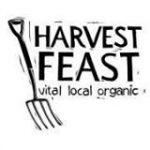 ‘ was around 25 years ago as ‘The All Organic Farm’, selling only certified organic produce until several years ago. We then made the decision to offer our customers Tasmanian chemical and spray free produce based on an increasing demand for local food that was sustainably produced.
‘ was around 25 years ago as ‘The All Organic Farm’, selling only certified organic produce until several years ago. We then made the decision to offer our customers Tasmanian chemical and spray free produce based on an increasing demand for local food that was sustainably produced.
We field many requests from within Tassie (and also the mainland) for home delivery and wholesaling of organically produced crops based on the produce we offer at our market stall. Selling our produce as “Tasmanian” is an integral part of our operation, it is a very strong marketing tool. There is definitely increasing awareness of GMOs and demand for non-GMO produce amongst our customers. We are responding by starting to let them know about the GM status of our range of products as well.
Harvest Feast aims to provide our community with the finest & freshest Australian & Tasmanian produce – sourced from farmers, growers and producers who care strongly about sustainable & chemical free production. Due to a lack of local supply in many lines, we import fresh certified organic produce from mainland Australia every week. We value highly the Tasmanian biosecurity measures & services in place to protect our local agriculture.
Fat Pig Farm
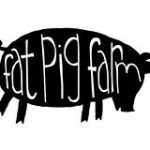 Matthew Evans and Sadie Chrestman own and run Fat Pig Farm, a small holding in the Huon Valley where we raise Wessex saddleback pigs, beef cattle, Wiltshire Horn and Dorper sheep and are gradually growing a small market garden and orchard. We currently sell our ham and bacon to A Common Ground in Hobart, operate a food van at summer food festivals, selling roast pork buns, and host long table lunches and picnics using produce from Fat Pig Farm.
Matthew Evans and Sadie Chrestman own and run Fat Pig Farm, a small holding in the Huon Valley where we raise Wessex saddleback pigs, beef cattle, Wiltshire Horn and Dorper sheep and are gradually growing a small market garden and orchard. We currently sell our ham and bacon to A Common Ground in Hobart, operate a food van at summer food festivals, selling roast pork buns, and host long table lunches and picnics using produce from Fat Pig Farm.
Fork and Hoe Collective
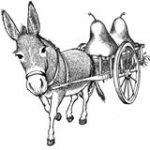 We have a gorgeous 200 acres of land in southern Tasmania, which faces all directions, with a good mix of pasture, native bush, winding creeks, surprising springs and spectacular views. As small producers of organically grown vegetables and fruit, we sell our produce at a local market each week. We are in the unique position of having a responsive supply and demand relationship directly with our consumers. We already offer a diverse range, and are encouraged that they want to try new varieties of produce. This increased diversity builds our resilience, and these interactions with consumers help build market demand for locally produced food.
We have a gorgeous 200 acres of land in southern Tasmania, which faces all directions, with a good mix of pasture, native bush, winding creeks, surprising springs and spectacular views. As small producers of organically grown vegetables and fruit, we sell our produce at a local market each week. We are in the unique position of having a responsive supply and demand relationship directly with our consumers. We already offer a diverse range, and are encouraged that they want to try new varieties of produce. This increased diversity builds our resilience, and these interactions with consumers help build market demand for locally produced food.
We find that increasingly, consumers are excited about being directly linked to their food and their growers, and are curious about various growing methods, heirloom varieties, and our lifestyle as farmers. There is enormous market potential in this curiosity, as evidenced by the growing business of farm based tourism.
Demand for quality locally produced food is rapidly growing – we are unable to keep up with demand for our produce from market and also from local restaurateurs and community groups. Consumers are desperate for authentic, quality, unique, heirloom, local produce. In many ways we have helped grow the local market, as our produce appeals to a wide range of consumers. This strengthens our local food security and local economy through increasing interest and demand for local produce and markets.
Our local operation means we are fairly resilient to rising fuel prices and in a unique position to adapt to climate change. Being a small scale farm, we look to our local community for services. We hire local contractors, and will look to our local community for employees when we need to expand. The money we make is invested back into our community.
Our Mates’ Farm Pty Ltd
We have a 79 acre apple orchard converting to a mixed farming operation, seeking to produce high quality, ethically produced food for Tasmania. The long term vision is to create a farm that will attract domestic and international visitors with an interest in holistic agriculture management, producing and eating better-than-export-quality food, and those seeking the childhood farm experience that they remember for their children.
The primary market for our apples currently is juice, however Australia imports 180 million litres of cheap Chinese apple juice concentrate annually. If there was accurate labelling so people knew the products they were buying contained this concentrate, we know the demand for our organically grown Huon Valley apples would go through the roof. The price we receive for our apples directly affects our ability to employ people and expand our business.
Miellerie Honey
![]()
The name “Miellerie” (pronounced “meeyelleree”) – French for “The House of Honey” – describes exactly what we do. Based in the booming food & wine region of the beautiful d’Entrecasteaux Channel (just 30 minutes’ drive south of Hobart), we’ve been producers of pure, untreated, unheated honey from pristine Tasmanian native forests since 2005. We specialise in bio-dynamic beekeeping, crop pollination, & quality honey production essential in retaining its raw, natural qualities.
Owner Yves Ginat has successfully developed high-level brand recognition in well-established niche markets in Tasmania & mainland Australia, with much demand from overseas export markets as well. We’re now positioned to take the next step of meeting increasingly strong demand for a tourism-based Miellerie farmgate . This will be based in the stunningly scenic tourist area associated with not only Huon Valley’s wine & food trail, but also Bruny Island’s reputation for fine seafoods & cheeses.
As the world experiences a surge of interest in the significance of bees & honey to the health of both the natural & cultivated worlds, we’re keen to share our experience & knowledge to continue to help support our local regional economy & community.
Backyard Bounty
 Backyard Bounty is a small family business, based in suburban Hobart. Backyard Bounty aims to simultaneously reduce waste and build community, whilst growing Tasmania’s food sovereignty by encouraging urban agriculture and supporting local farmers. Our preserves consciously eschew all but the most traditional preservatives (sugar, salt, vinegar, spices) and are made with home-grown or local produce. Through our new vegie box program we hope to encourage Tasmanians to eat more fruit and vegetables, and through the associated recipes demonstrate the achievability of cooking delicious and varied food from scratch.
Backyard Bounty is a small family business, based in suburban Hobart. Backyard Bounty aims to simultaneously reduce waste and build community, whilst growing Tasmania’s food sovereignty by encouraging urban agriculture and supporting local farmers. Our preserves consciously eschew all but the most traditional preservatives (sugar, salt, vinegar, spices) and are made with home-grown or local produce. Through our new vegie box program we hope to encourage Tasmanians to eat more fruit and vegetables, and through the associated recipes demonstrate the achievability of cooking delicious and varied food from scratch.
Two Metre Tall Real Farmhouse Ale & Cider
 We are farmers brewing farmhouse ales & ciders in unique batches using farm-grown ingredients from our own 600ha property in the Derwent Valley of Tasmania as well as ingredients sourced directly from farmers across the state, in whole, unprocessed condition. Our sales are made at farmgate, online & festivals & marketing events across Australia.
We are farmers brewing farmhouse ales & ciders in unique batches using farm-grown ingredients from our own 600ha property in the Derwent Valley of Tasmania as well as ingredients sourced directly from farmers across the state, in whole, unprocessed condition. Our sales are made at farmgate, online & festivals & marketing events across Australia.
In terms of this submission, our emphasis would lay very heavily on reform to labelling integrity (to iron out the misrepresentations & deceptive language, particularly by via corporate marketing) and on animal welfare based reform to the constrictions of farmers to produce “real food” due to largely contestable health & safety concerns (ie the sale of raw milk, fresh eggs & farm-killed meat).
A lower regulatory, evidence-based industry environment would seem very much aligned with the views of the current political climate and we would be comfortable with the exercising of ideology in this direction. Two Metre Tall Real Farmhouse Ale & Cider
Provenance Growers
 Growers and suppliers of edible plants and produce for restaurants, kitchens and kitchen gardens. We garden using biological methods and local and recycled inputs, and we seek out old and unusual varieties. Find us at Farm Gate Market, corner of Elizabeth and Melville Streets, Hobart, Sundays, 9am-1pm provenancegrowers.blogspot.com
Growers and suppliers of edible plants and produce for restaurants, kitchens and kitchen gardens. We garden using biological methods and local and recycled inputs, and we seek out old and unusual varieties. Find us at Farm Gate Market, corner of Elizabeth and Melville Streets, Hobart, Sundays, 9am-1pm provenancegrowers.blogspot.com
[button_link url=”http://agriculturalcompetitiveness.dpmc.gov.au/papers” target=”blank” style=”” title=”” class=“icon-download-alt” id=”” onclick=””] Download pdf version of the white paper [/button_link]


